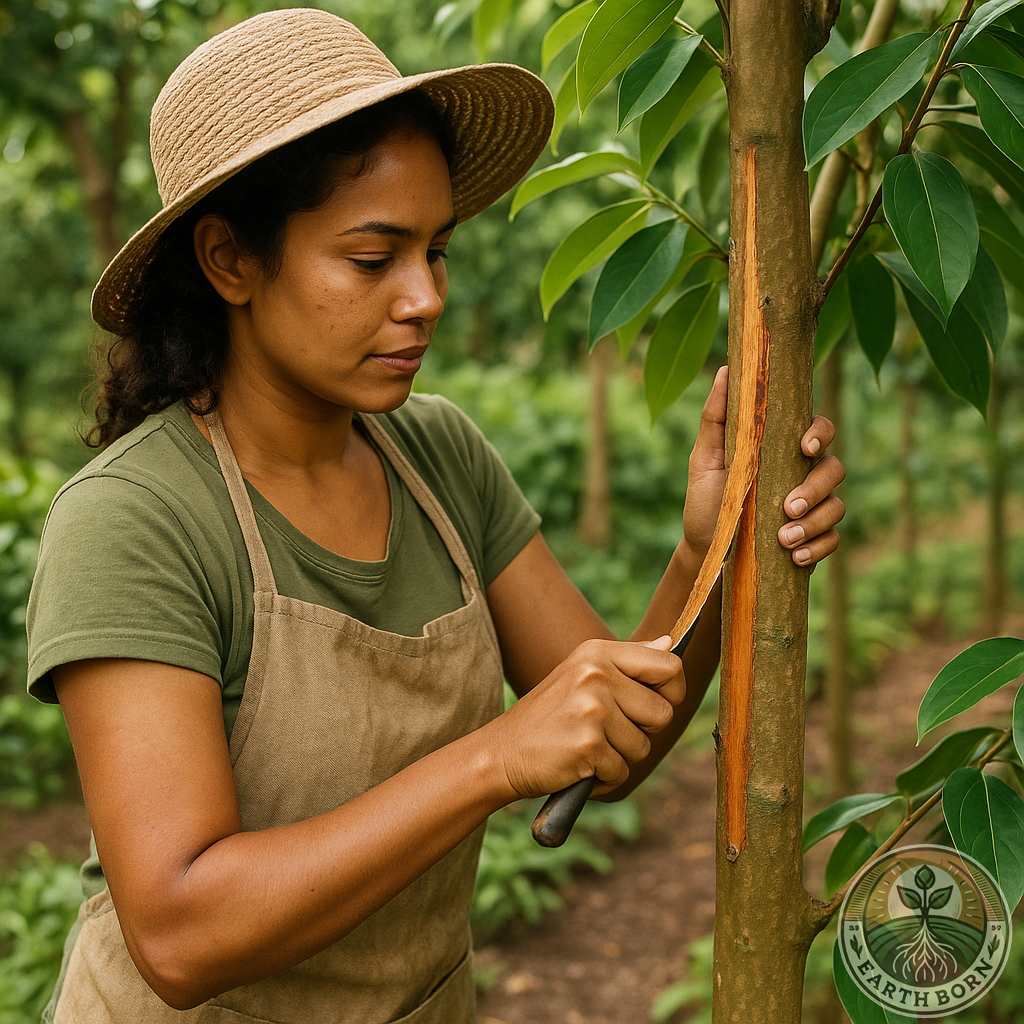
Ceylon Cinnamon (Cinnamomum verum), often called True Cinnamon or Sri Lankan Cinnamon, is a highly prized spice native to Sri Lanka and southern India. It belongs to the Lauraceae family and has been cultivated for thousands of years. Ancient Egyptians used it in embalming, Romans valued it for its fragrance, and it was considered more valuable than gold during the spice trade era. Today, Ceylon Cinnamon is celebrated for its delicate, sweet aroma and numerous medicinal properties.
💊 Medicinal Benefits
Ceylon Cinnamon contains active compounds such as cinnamaldehyde, eugenol, and linalool, giving it powerful anti-inflammatory, antioxidant, and antimicrobial properties. It supports healthy blood sugar regulation, aids digestion, and may improve heart health. Additionally, its gentle warming effect is often used to ease colds and flu symptoms.
📅 When to Plant in South Africa
The best time to plant Ceylon Cinnamon in South Africa is in spring (September to November) when temperatures are warm and soil conditions are optimal. Seedlings aged 6–12 months transplant well during this period.
🏡 Where to Plant
Plant Ceylon Cinnamon in tropical or subtropical regions of South Africa. It grows best in protected areas away from strong winds and frost. Ideal locations include home gardens, small orchards, or large pots for urban gardeners.
🌞 Soil, Water & Sunlight Requirements
✅ Soil
Well-draining, fertile soil rich in organic matter (pH 4.5–5.5) is ideal. Mulching helps retain moisture and improve soil health.
✅ Sunlight
Prefers full sun to partial shade. Too much shade reduces leaf and bark quality.
✅ Water
Keep soil consistently moist but not waterlogged. Overwatering may cause root rot.
✅ Fertilize
Apply a balanced organic fertilizer every 4–6 weeks during the growing season.
✅ Spacing
Space plants 2–3 m apart when grown in the ground to allow good air circulation.
✅ Seeds germinate
Seeds germinate in 14–21 days in warm, moist conditions.
✅ Transplanting
Transplant seedlings when 15–20 cm tall into their permanent location.
✅ Maturity height
Mature trees can grow 3–15 m tall, depending on pruning and growing conditions.
🍓 Flowers & Fruit
Ceylon Cinnamon produces small, yellowish-white flowers in clusters, followed by small purple drupes (berries). The bark, leaves, and twigs are harvested for spice and essential oils.
🌼 Companion Plants
Good companions include Lavender, Rosemary, Thyme, and Lemongrass, which help deter pests and improve soil biodiversity.
🐛 Common Pests
Watch for scale insects, mealybugs, spider mites, and leaf miners. Neem oil or insecticidal soap works well for natural control.
🧺 Harvesting
Harvest bark from 2–3-year-old branches during the rainy season when the bark peels easily. After cutting, remove the outer bark and scrape off the inner bark for drying.
🫙 Storage
Store dried cinnamon bark in an airtight glass container in a cool, dark place. Whole sticks last up to 4 years, while ground cinnamon retains potency for 6–12 months.
🧪 How to Use as Medicine
- Cinnamon Tea: Steep 1 stick in hot water for 5–10 minutes to aid digestion and circulation.
- Cinnamon Honey Mix: Combine ½ teaspoon powdered cinnamon with 1 teaspoon raw honey to soothe sore throats and colds.
- Topical Use: Dilute cinnamon essential oil with a carrier oil and apply to joints for mild pain relief.
Check out this post find out how to make 3 home remedies using Ceylon Cinnamon
🎉 Fun Fact
In ancient times, cinnamon was considered so valuable it was gifted to kings and deities and used in sacred temples for purification.
⚠️ Caution
- Use in moderation as excessive consumption may lower blood sugar too much.
- Some individuals may experience skin irritation or allergic reactions to cinnamon oil.
- Pregnant or breastfeeding women should consult a healthcare professional before use.
Ready to grow your own fragrant and medicinal Ceylon Cinnamon? Start planting today and bring the warmth and wellness of this ancient spice into your home garden!
#EarthBornGrower #CinnamonSpice #GrowYourOwn #HerbalHealing #SouthAfricanGardening


 **Meet Sprout!** Sprout is your friendly gardening companion at Earthborn, always ready with helpful advice on plant care, medicinal herbs, and natural gardening solutions. From seedling to harvest, Sprout provides expert guidance to nurture your garden and your well-being—making gardening easy, fun, and naturally rewarding.
**Meet Sprout!** Sprout is your friendly gardening companion at Earthborn, always ready with helpful advice on plant care, medicinal herbs, and natural gardening solutions. From seedling to harvest, Sprout provides expert guidance to nurture your garden and your well-being—making gardening easy, fun, and naturally rewarding.

[…] To find out how to grow and care for the tree click here […]